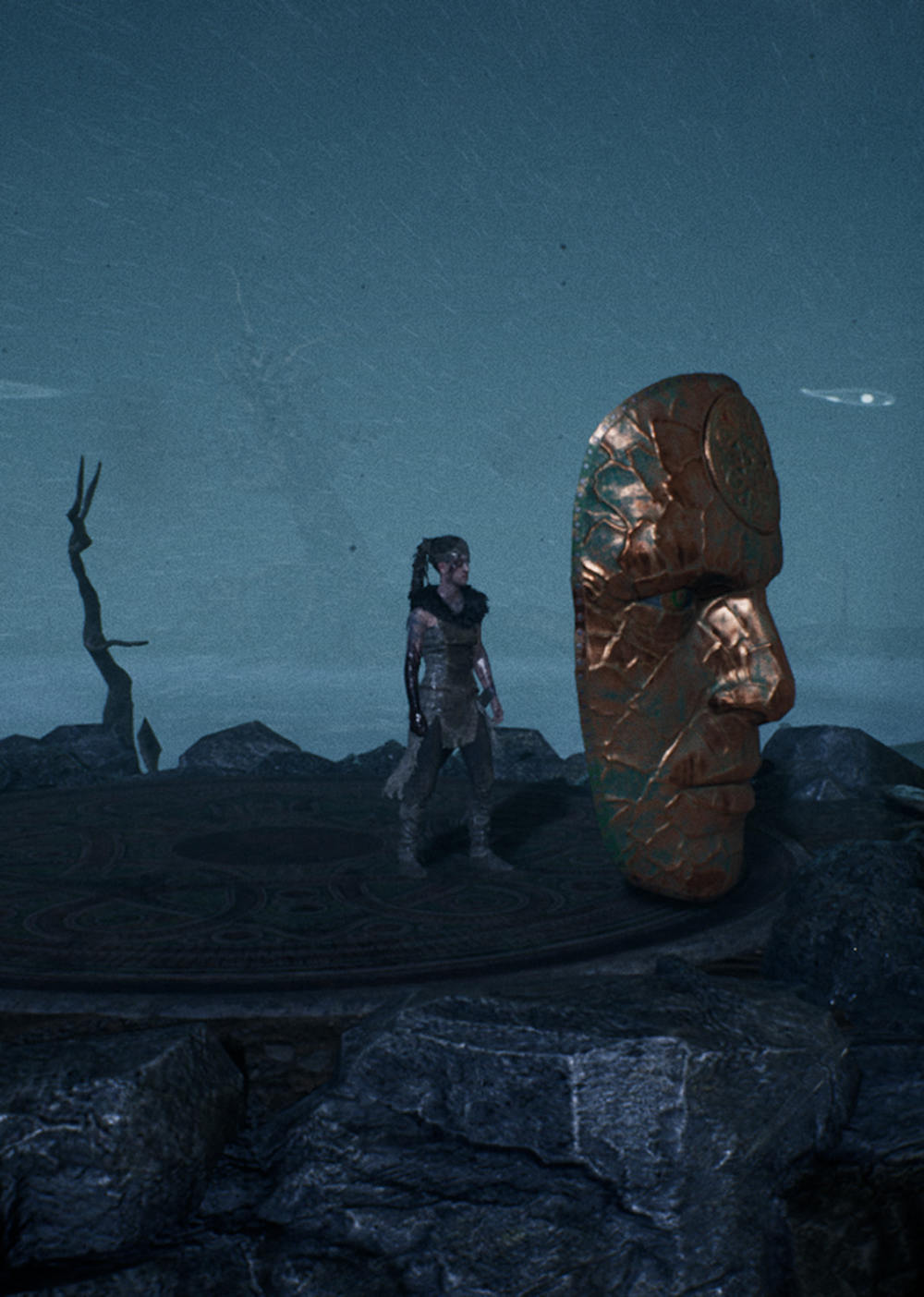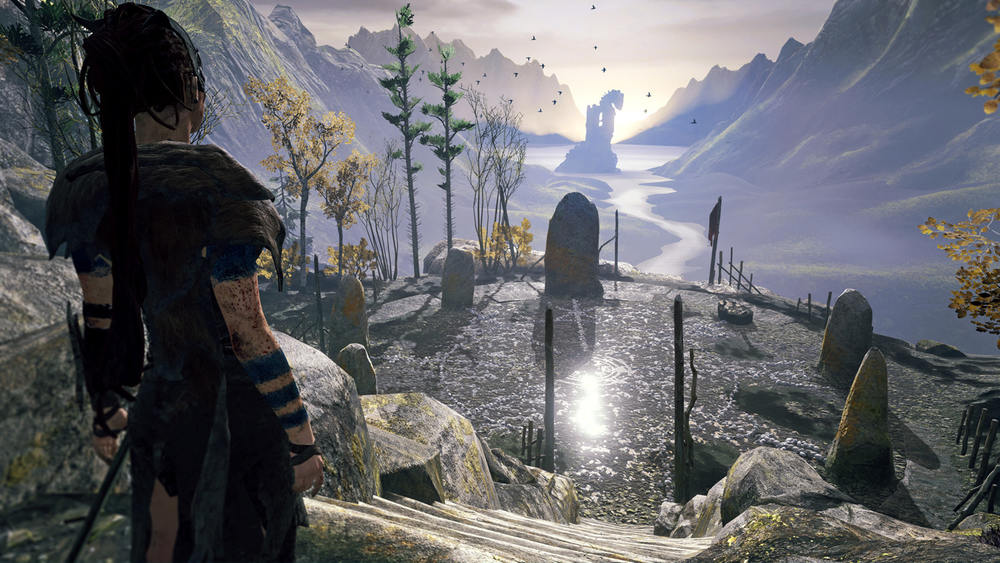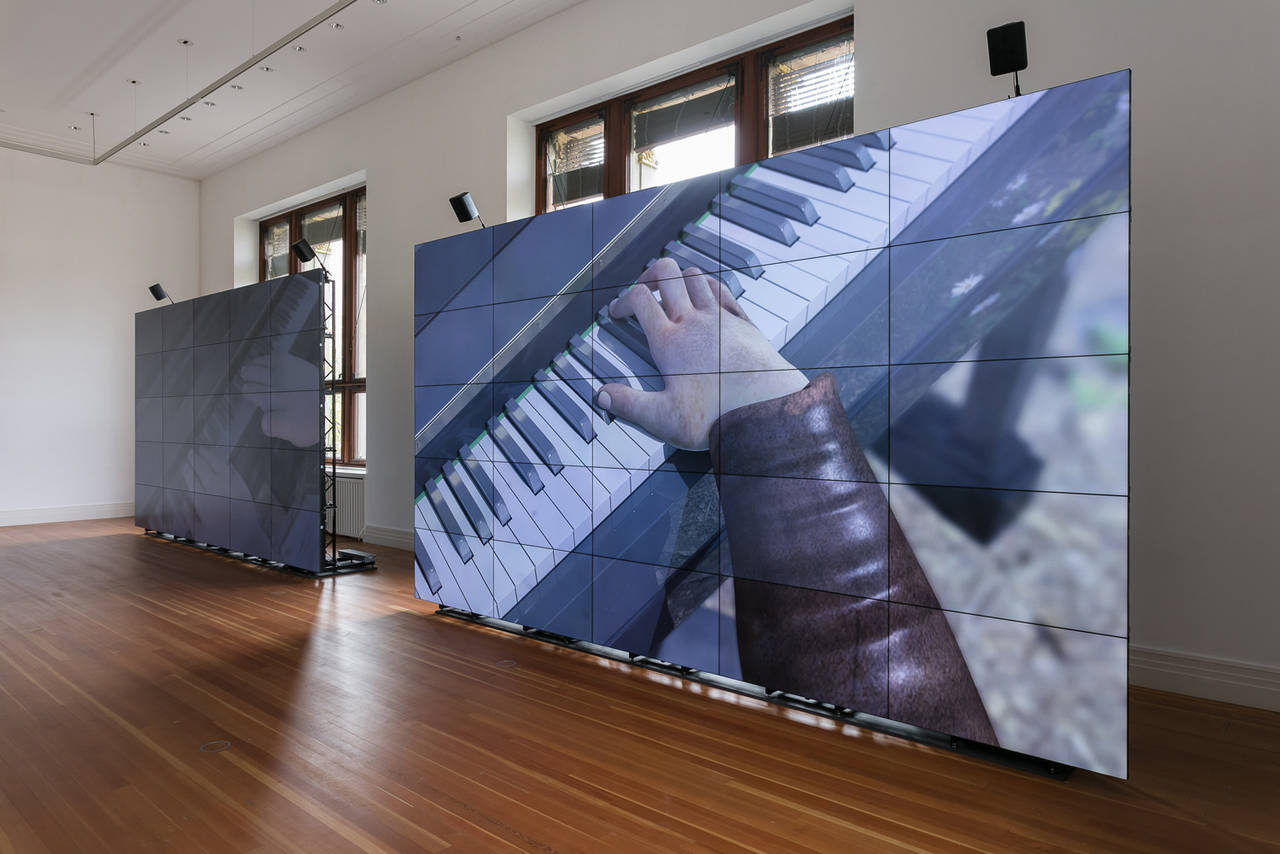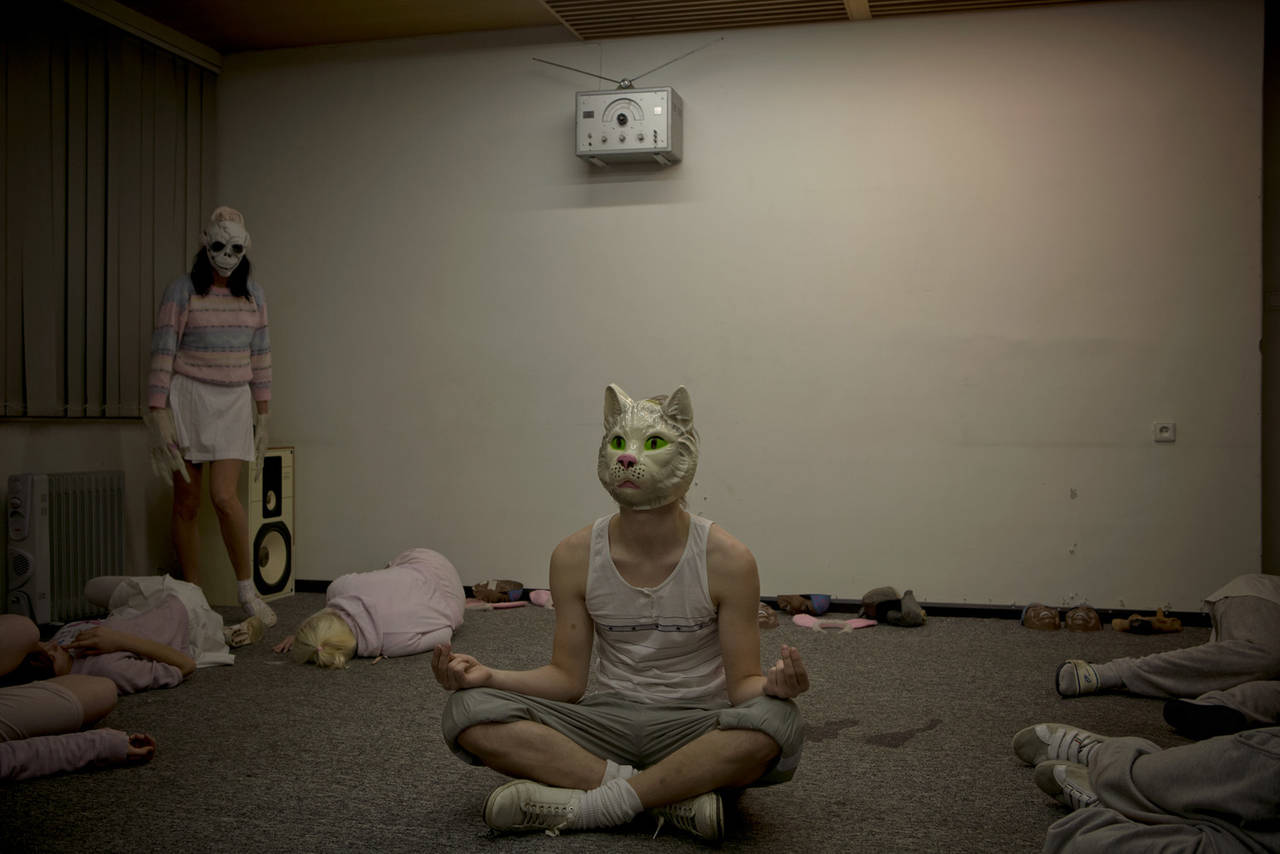These days, computer games are discussed in arts supplements. What is their appeal and how do they develop such a strong draw for people? Let’s play!
Perhaps the American comic series “Rick & Morty” gave the best insight into exactly what we can imagine a successful immersion in virtual reality to be. In one episode the two heroes make a stopover on a planet of games arcades, where, without warning, Rick places a VR helmet on his grandson Morty’s head, catapulting him into the game “Roy: A life well lived”. Morty doesn’t know how this has happened and experiences an entirely different life as Roy in the virtual world: school, sporting success, marriage, children, opening a carpet shop, at one point falling ill with cancer, succumbing to it and eventually Roy’s death at 55 years old. “Game over” is paraded across the screen in big letters, and what’s left is a very confused Morty, who cannot comprehend that he has merely played a game, so strong was the immersion, the delving into this virtual life.

Rick & Morty, Image via coub.com
The fact that a gaming experience like this is still a thing of the future is clear to anyone who has ever put on VR goggles and entered a virtual space. Although also an impressive experience, no one here forgets who they really are or merges entirely with the world they experience technologically. With progressive processor and graphics capabilities it is possible to create convincing spaces, landscapes, even entire worlds – yet the endless discussion about realistic-seeming graphics makes it clear that everyone still knows well enough that they are in a digitally created space. Despite the various deficiencies though, computer games are increasingly able to use various means to draw their users under their spell.
Simulated worlds
In order to differentiate between various levels of immersion, scientists distinguish between certain categories of immersion, whereby with computer games it is “spatial immersion” and “narrative immersion” that are particularly important. “Spatial immersion” describes simulated worlds that are particularly convincing in terms of the user’s perception of sensations, while narrative or even emotional immersion is familiar to us from literature, film and particularly TV series, and draws recipients strongly into a fictional world based on the relevant framework of action.

With regard to narrative immersion in particular, the computer game landscape has changed radically over the last few years. It has been a long time since it was unusual to see new releases discussed in the arts section of major daily or weekly newspapers. Gone are the days when computer games were seen as a way to kill time for infantile individuals – or as the well-known film critic Roger Ebert once put it: “For most gamers, video games represent a loss of those precious hours we have available to make ourselves more cultured, civilized and empathetic” – instead, now we have discussions about their artistic possibilities.
Journey into the realm of the Vikings
In August of this year, for example, the British game development studio Ninja Theory released the hotly anticipated game “Hellblade – Senua’s Sacrifice”. Located in a past, mythically charged world, the gamer controls the main character Senua, loosely based on the Celtic goddess Senuna. She returns to her home village after years in exile to find only remnants of it. Vikings laid waste to it, pillaging and plundering, and all the residents were brutally killed, including her great love Dillion. Senua decides to travel to the underworld, called Helheim here, and to her beloved, just as in the saga of Orpheus and Eurydice, to free him from the clutches of Hel, the goddess of death. A typical story, you might think, but the developers have added a particular feature to the main character: She suffers from psychosis and is constantly plagued by voices in her head. Together with the unusual heroine, the player embarks on a journey deep into the realm of the Vikings, learning things about Nordic mythology, solving puzzles and, of course, fighting.


While these sorts of game mechanisms are well known and, by their very essence, repetitive, the developer knows how to ensure this causes minimum disturbance to the flow of the game: He barely makes any of the otherwise typical tutorials available to the player. Wherever possible, the necessary explanations are incorporated into the flow of the story, and the scant player information given is often unsettling: If the heroine dies too frequently this leads to the score being erased, the gamer is told, for example. Regardless of the framework plot and the gaming technique, the actual objective quickly becomes clear: Follow Senua on her journey to the depths of grief, experience with her how the darkness sets in.
The surroundings breathe
The manufacturer’s suggestion to play the game with headphones is what actually makes the major difference: The protagonist, and thus the player, is continually abused by the voices in her head. They insistently talk at Senua from all sides: She’s going to die anyway; her struggle is senseless. Some of the voices are afraid and want to turn back, others console her or give helpful hints. In any case, the sound design serves the immersion entirely. The game world appears to have a life of its own; the surroundings literally breathe.

Meanwhile, the protagonist’s breathing reveals her inner states, which are not always justifiable at first glance. Time and again Senua suddenly begins hyperventilating; the physique as a harbinger of the psychological abyss into which the player is inevitably dragged. The visible surroundings adapt logically to the inner states of the heroine; we not only hear the voices in her head, but we also see the environment change. The immersion thus functions on several levels: The player dives into an impressively presented game world, then sinks ever deeper into the story of Senua, who in turn is drawn by her psychosis into an alternative reality.
Intensive collaboration with neurologists
“Hellblade – Senua’s Sacrifice” aims to achieve one thing above all, namely to make it possible to experience a highly individual state intersubjectively. Unlike movies, for example, the high degree of immersion is achieved through interactivity – the player decides how exactly Senua moves and where to. The suggested endless freedom of movement and the limitless influence on the course of action offer the recipient an additional moment of captivation in a story that otherwise ends conventionally. The game even includes its own “making-of”. In it, the developers talk about their intense collaboration with neurologists, psychiatrists and psychosis patients with the aim of creating an experience of mental illness that is as realistic as possible for the player, something that wouldn’t be the case in other media such as film or literature.


One cheeky move in this regard is the option to open up a “photo mode” at any time and take comprehensive snapshots of the goings-on in the game and the environment. The mode is very popular among users, giving them the possibility almost of sending postcards from this “adventure holiday” with a difference. The developers have succeeded, in spite of smaller deficiencies, in creating an impressive gaming experience which entirely lives up to its claim.
A kind of walk-in diorama
Other titles too are making ever greater use of narrative immersion. For some years now, the developer studio Telltale has been releasing new seasons of a game, almost like TV series, which draw players into dramatic stories in a huge variety of genres. Here, it presents the prospect of full influence over the action and power over the course of the dialog. Does the player allow their character to act recklessly, do they remain calm or allow themselves to be exploited? Yet this only really works if one is entirely immersed in the figures and dramatic situations, as the developers intend – if the player decides against the assumed identification then the dramaturgy fails somewhat.

The “Life is strange” series by developer Dontnod Entertainment makes use of a similar functionality. The successful game combines elements of a coming-of-age drama and a crime story, at the same time incorporating the player’s freedom to make decisions on the level of the action. In the “Virginia” walking simulator, on the other hand, you operate in an impressively atmospheric world as a female FBI agent in a kind of Twin Peaks scenario. If the player has exhausted the options for action, they simply direct the protagonist from one dream-like scene to the next. The game is an attempt to replace classic narration with a kind of walk-in diorama and to stimulate the observer exclusively through states of emotion.
The world of video games is thus becoming ever more aware of the tools that are genuinely its own and the possibilities they offer, which differ from those of media like film or literature. One could, however, also hold firm to the fact that they are creeping towards the territory of those media and by doing so are also becoming increasingly similar to them: explaining the world and telling grand stories simply using other means.



How Virtual Reality conquers the art world
Ever danced with a wolf? Artist duo Djurberg & Berg make it possible with their first virtual reality work. They are part of a young generation of...

The enemy of my enemy
From August 23 onwards, a unique project by artist Neïl Beloufa will transform the SCHIRN into a stage. Palais de Tokyo is currently hosting Beloufa's...

In the vicious circle of sadness
As part of the “Immersion” series, British artist Ed Atkins is presenting an exhibition at Martin-Gropius-Bau that addresses our ubiquitous escapism...

The border between reality and fiction
Its productions turn the theatergoer into an actor: An interview with performance collective SIGNA about immersion, fiction and its play “Das halbe...

From window to pool
The distance between viewers and film is becoming ever smaller. Even 120 years ago, cinemagoers were jumping out of their seats as a locomotive...

Hats off, it’s Wagner
The opera “Mondparsifal Beta 9-23” by Jonathan Meese at Berliner Festspiele draws visitors into a cosmos where logic plays only a subordinate role.

Complete dissolution
Is complete immersion in a virtual world a utopia or a dystopia? These and other questions are answered by Prof. Rupert-Kruse, immersion researcher,...

Noise interference from a distant world
An experience for all the senses: An exhibition at Kunstverein Frankfurt invites viewers to immerse themselves in virtual and constructed worlds

Who lives here?
Visitors can immerse themselves in a long bygone era at the Dennis Severs House in London. A truly great experience.

A journey back in time to a divided Berlin
It might not look very exciting from the outside: A large black rotunda that has landed on the onetime “Death Strip” of the Berlin Wall like a...

Diorama. Inventing Illusion
Reality or illusion: The SCHIRN presents a major exhibition dedicated to the idea of staged vision.

Zombies like us
The Internet is full of the undead. The artist duo New Scenario makes them visible — in works that function online, and even offline sometimes.

The dream of watching in 360°
Humans have always had a burning desire to watch, to observe. Now, virtual reality is opening up entirely new possibilities for the creation of...

Exhibited realities
In the exhibition “Diorama. Inventing Illusion” artists question staged visions and reconstructed realities. In modern everyday culture, this...